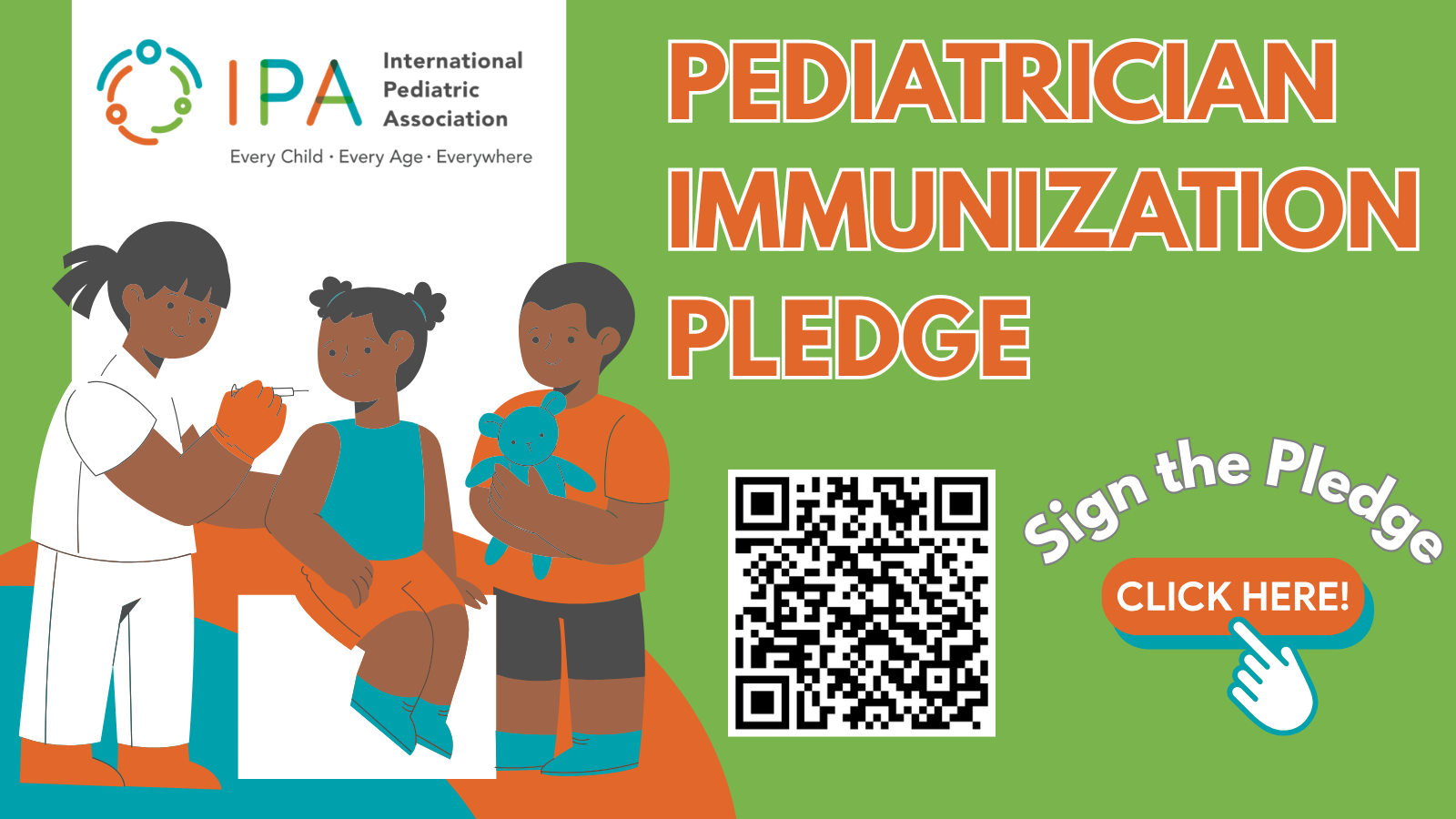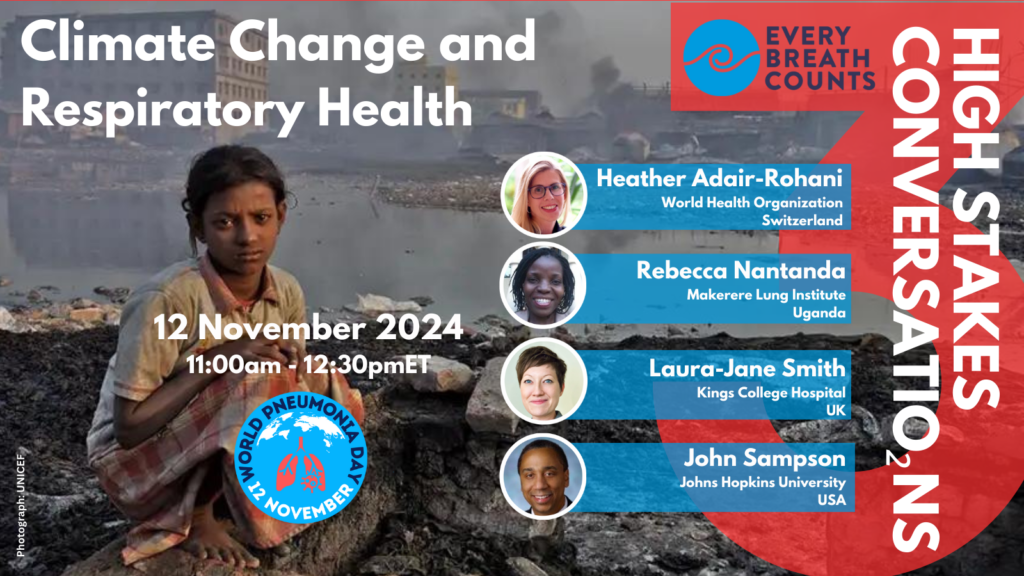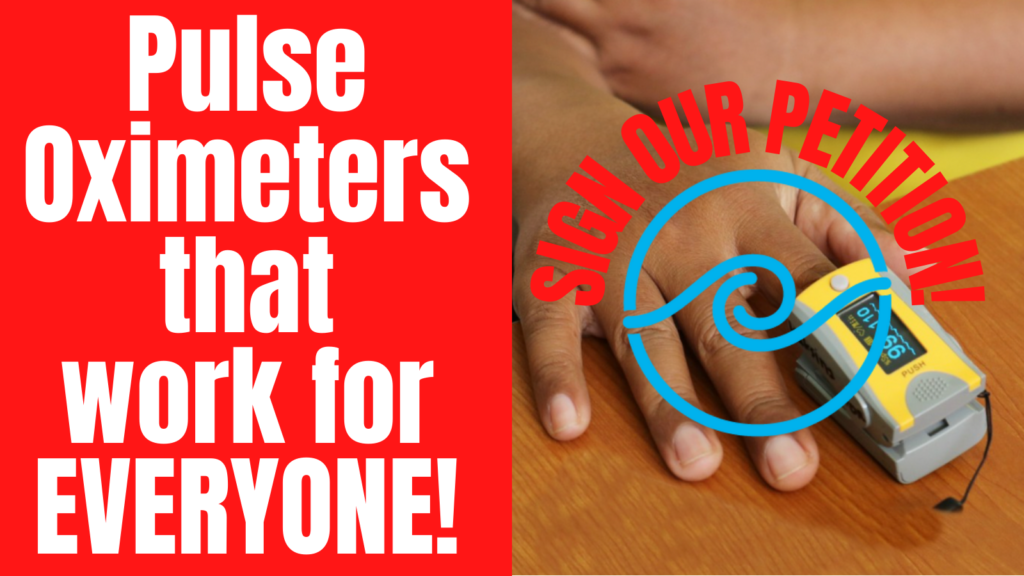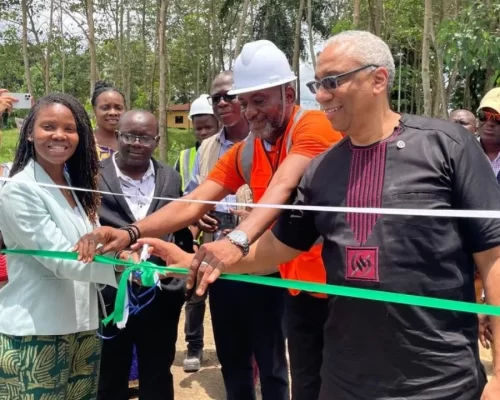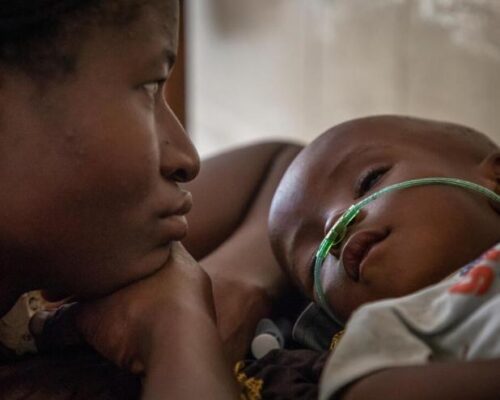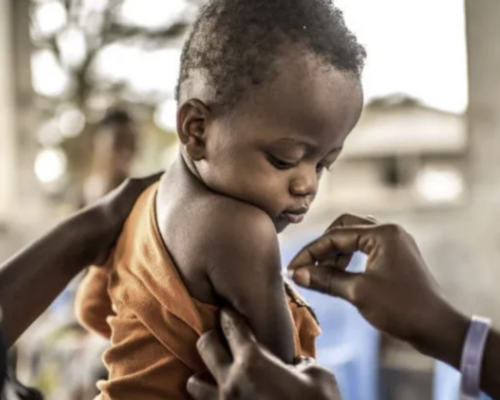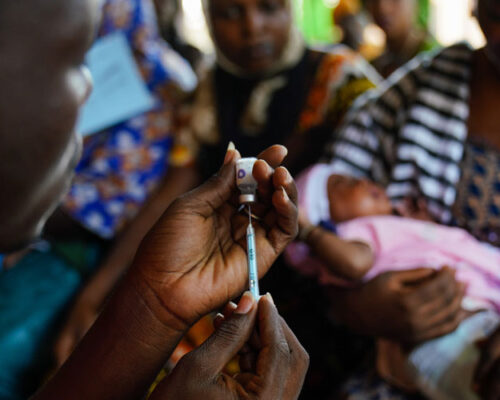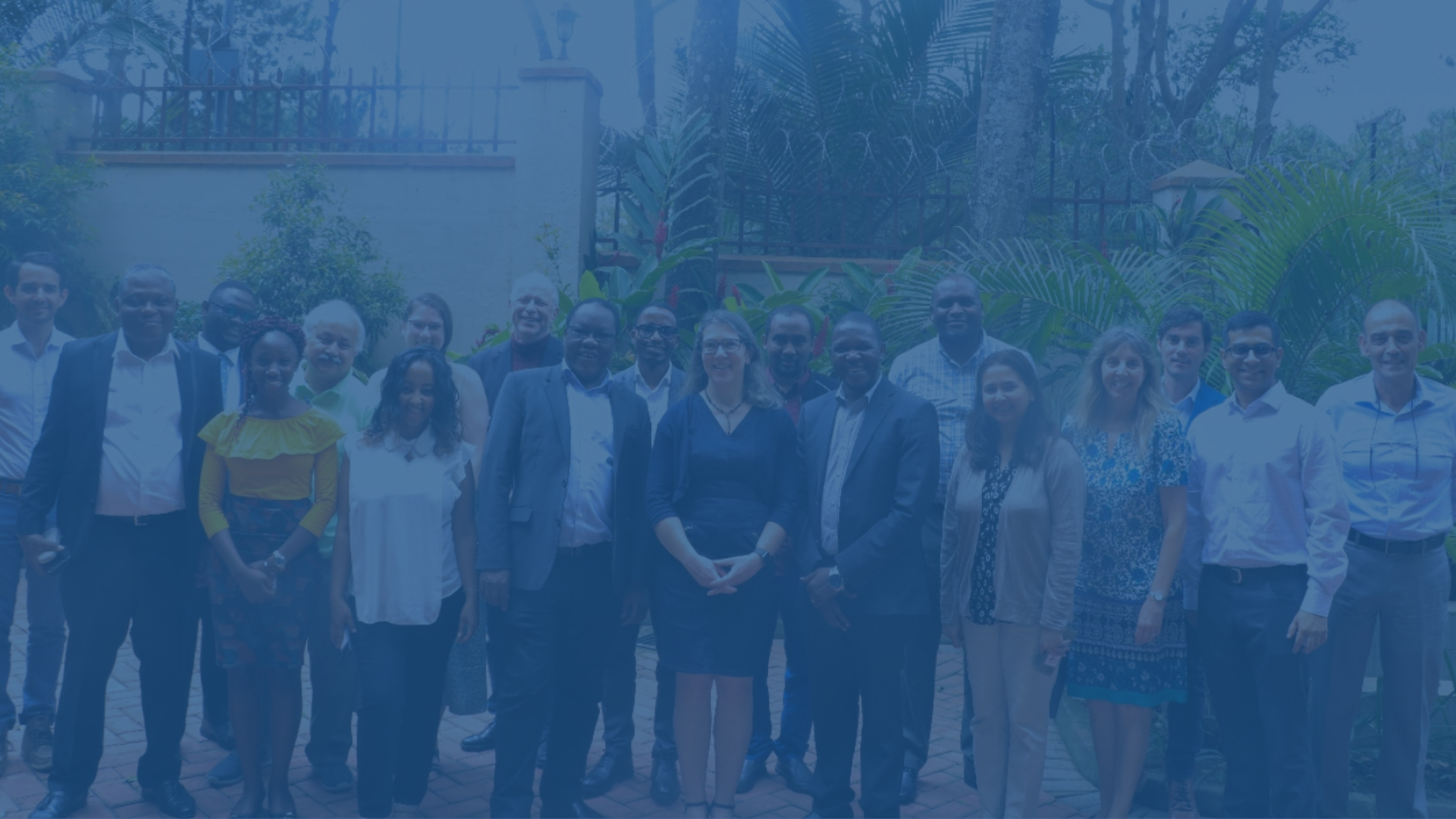
Lancet Global Health Oxygen Commission
In September 2022, the Lancet Global Health Oxygen Commission was announced to recommend ways to ensure that no patient dies for lack of access to medical oxygen
Learn more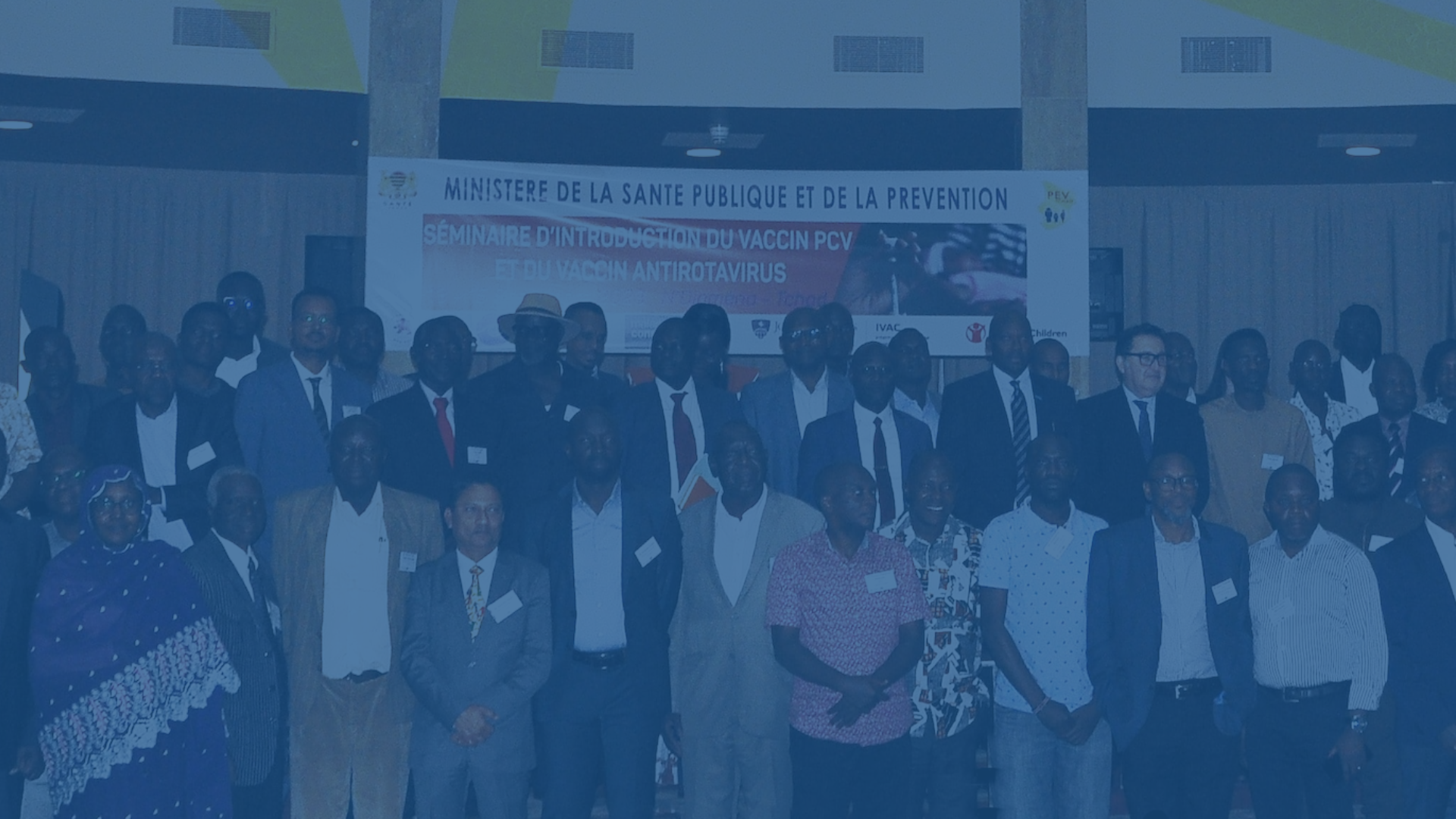
Introducing PCV and rotavirus vaccines
In September 2023, 80 stakeholders came together to accelerate introduction of pneumococcal and rotavirus vaccines in Chad, Guinea, South Sudan, and Somalia
Learn more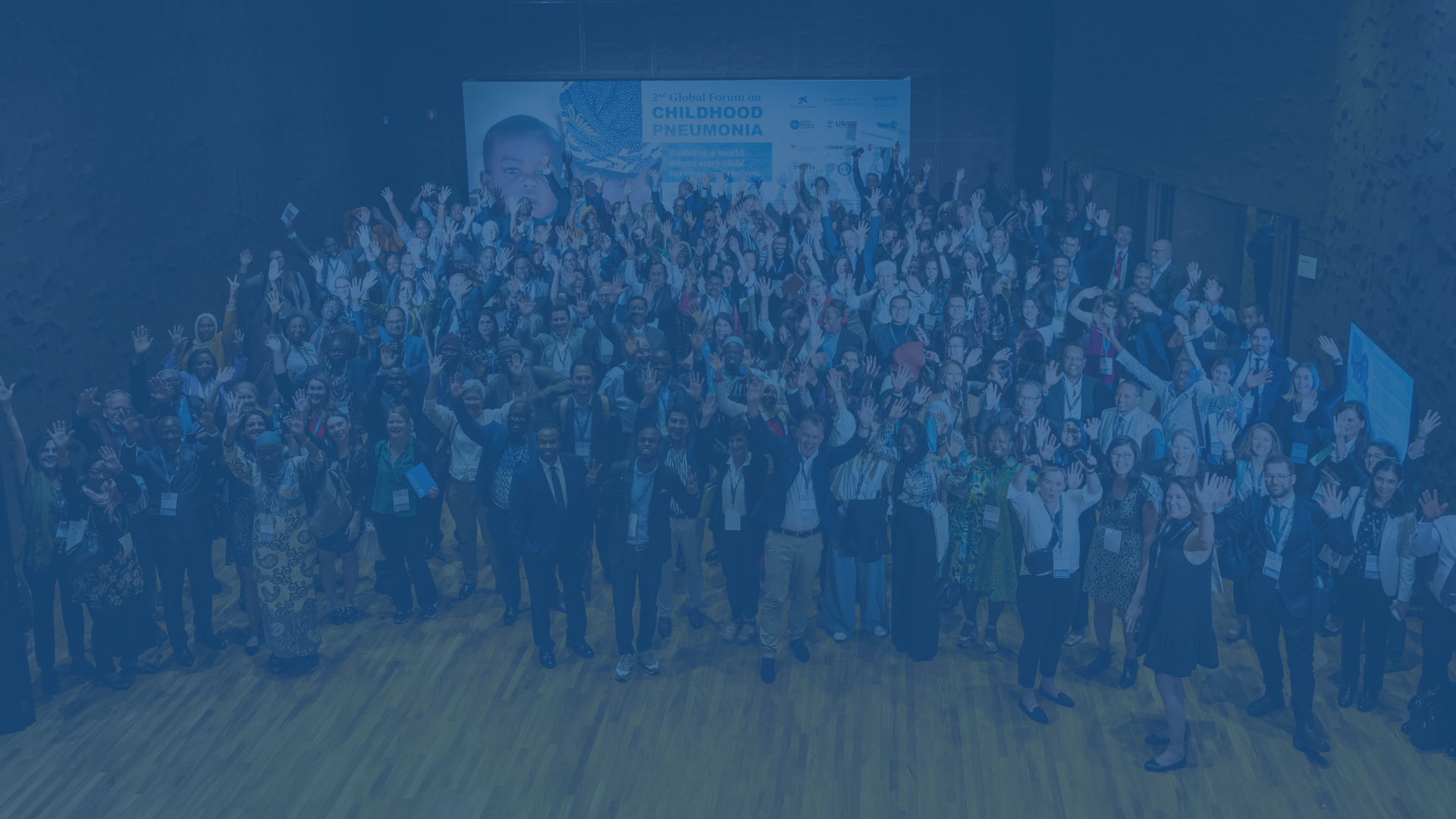
2nd Global Forum on Childhood Pneumonia
In April 2023, more than 300 stakeholders came together in Spain to commit to better ways to reduce child deaths from pneumonia
Learn moreEvery Breath Counts is a global coalition of over 100 organizations representing the United Nations, global health agencies, non-government agencies, donor foundations, companies, and academic institutions supporting countries to reduce pneumonia deaths from all causes, across all ages.
Members work together to help countries close critical gaps in pneumonia prevention, diagnosis, and treatment to save lives now and prepare for the next respiratory pandemic. This will accelerate achievement of the health-related Sustainable Development Goals (SDGs) by 2030 and reduce the risk that another respiratory pandemic will trigger a tragic surge in pneumonia deaths, as COVID-19 did.
Respiratory infections are the world’s biggest infectious killer and claimed 2.2 million lives – including 502,000 children under five – according to the latest Global Burden of Disease estimates. That’s 250 people dying every hour. Yet pneumonia remains a neglected disease and has been called a “global cause without champions” – one of the reasons the world was so blindsided by COVID-19, a pandemic of respiratory infection. COVID-19 added 7.9 million additional deaths in 2021, bringing the total number of respiratory infection-related deaths to a massive 10.1 million in that year.
No other infectious condition caused anywhere near this burden of death. Respiratory infection-related deaths even surpassed deaths from heart disease and stroke during the pandemic!
Unless we take action now to reduce pneumonia deaths and the risk of another respiratory pandemic killing more than 10 million people – which experts say is 66% likely in the next 25 years – millions more adults and children will die from pneumonia.
It won’t be easy. The global threats of climate change and antimicrobial resistance are increasingly undermining our ability to reduce pneumonia infections and deaths. Climate change increases air pollution, the leading risk factor for pneumonia death, and antibiotic resistant pneumonias are one of the largest contributors to the estimated 1.3 million deaths attributable to antimicrobial resistance that occur each year.
Our cause could not be more urgent. Join us!
“As trusted sources of health advice for families, pediatricians can play a major role in increasing uptake of vaccines, especially among children living in the countries where child deaths are concentrated. We pledge to play our part to protect all children with vaccines in the countdown to 2030.”
Read and sign the International Pediatric Association (IPA) Pediatrician Immunization Pledge, just launched at the 31st IPA Congress in Mexico!
Read the Pledge in:
Sign on here!
Integrating vaccination and nutrition services!
Watch Vital Connections: Immunisation-Nutrition Service Linkages for Synergy, Scale, and Impact, held on the sidelines of the Nutrition for Growth (N4G) Summit, on 27 March, in Paris. The webinar explores the significant untapped potential for integrated vaccination and nutrition services to accelerate child mortality reductions breaking the cycle of malnutrition and infectious disease.
No Vaccination Without Nutrition
Vaccinating children and addressing poor nutrition at the same time can save more lives, because fully-vaccinated, well-nourished children are far less likely to die. Help us make this the new reality for all children by watching and sharing No Vaccination Without Nutrition, a campaign from Every Breath Counts in support of Child Survival Action. Find out more here.
The Lifesaving Power of Pneumonia and Diarrhea Vaccines for Children
Global achievement of the child survival Sustainable Development Goal (SDG) of 25 child deaths for every 1,000 babies born is within reach by 2030 if under-vaccinated populations of children can be protected with the most lifesaving vaccines. Our new report, “The Lifesaving Power of Pneumonia and Diarrhea Vaccines for Children,” shows how full coverage of just three vaccines – PCV, rotavirus, and Hib – can prevent hundreds of thousands of child deaths by 2030 demonstrating the power of Child Survival Action.
If you missed the launch of the report on 15 July 2024, you can view the recording and the deck here (English and French), courtesy of the Child Health Taskforce Vaccination Subgroup!
High Stakes Conversations!
Did you miss our final High Stakes Conversation on Climate Change and Respiratory Health on 12 November to mark World Pneumonia Day and COP29? No problem, you can watch it here!
Did you miss the first two High Stakes Conversations on the lifesaving role of medical oxygen during respiratory pandemics (April) and for SDG achievement (June). Fear not! You can watch the first conversation here and read the summary here, and the second here and here.
Hot Off the Press
🔥
The Lancet Commisson on Investing in Health publishes Global Health 2050, which lays out a plan for every country to halve the probability of premature death (dying before 70 years) in their populations by 2050 by focusing on 15 “priority” conditions, including pneumonia. More here
🔥
African Critical Illness Outcomes Study (ACIOS) publishes data showing 1 in 8 patients in hospitals across 22 African countries are critically ill and 1 in 5 die within 7 days. Half of hospitalized critically ill patients with respiratory failure did NOT get medical oxygen. More here
🔥
INSPIRING Consortium publishes two papers exploring why primary health care facilities in Nigeria struggled to increase pulse oximetry use among sick children, shining a light onto several barriers that will need to be overcome in many low-resource settings. More here and here
Makerere University and others publish a study showing massive increases in access to pulse oximetry (24% to 88%) and medical oxygen (40 to 71%) on the first day more than 60,000 children were admitted to 31 hospitals across Uganda, between 2020 and 2022. More here
Murdoch Children’s Research Institute estimates that current pneumococcal conjugate vaccine (PCV) pricing policies benefit high-income countries and manufacturers who receive 77% of the net economic benefits generated by the vaccine. More here
Lancet Respiratory Medicine publishes a Respiratory Syncytial Virus (RSV) series with four major papers and a monumental conclusion: “We are on the cusp of a major effort to combat one of the most widespread and severe infections across all stages of life.” More here
The Lancet publishes Sustainable Access to Antibiotics, which finds that universal coverage of pneumonia vaccines (PCV, Hib, RSV, flu) could significantly reduce antibiotic consumption among children in LMICs and AMR-related deaths. More here
Every Breath Counts calls on governments to pay close attention to the trial data showing two doses of pneumococcal conjugate vaccine (PCV) are as effective as three or more – with the potential to dramatically reduce the costs of PCV programs. More here
The HAPIN Trial publishes two important papers in the New England Journal of Medicine that question the connection between household air pollution’s impact on both childhood stunting and pneumonia. More here (stunting) and here (pneumonia)
Malaria Consortium and CHAI-led research using the Lives Saved Tool (LiST) estimated that full coverage (>90%) of pulse oximetry and medical oxygen, antibiotics, and vaccines could halve child pneumonia deaths in Ethiopia, Bangladesh, and Chad. More here
University of Washington finds 66% of children hospitalized with pneumonia across six Asian and African countries received poor quality care, especially oxygen and antibiotics, with older, sicker children from poor households at greatest risk. More here
Azithromycine pour la Vie des Enfants au Niger – Implementation et Recherche (AVENIR) study results show that mass distribution of azithromycin to Nigerien children aged 1 to 59 months reduced deaths by 14%, replicating the MORDOR trial. More here
Sign our petition!
Vulnerable people
It is children and adults exposed to specific factors that are at greatest risk of dying from pneumonia. While the biggest risks for children are malnutrition, air pollution, and low birth weight/preterm birth, adults are more likely to die from pneumonia when exposed to air pollution and smoking, and when they lack access to handwashing facilities. People with multiple illnesses and conditions are also especially vulnerable. Lack of access to vaccination and timely, accurate diagnosis and treatment adds to these risks. Reducing pneumonia means identifying the populations who face the greatest risks and ensuring they are protected first.
Weak healthcare
Decades of underinvestment in preventing, diagnosing, and treating pneumonia followed by a punishing pandemic has left many countries with health systems that do not have the right equipment, the trained health care workers, and the engineers and technicians to effectively diagnose and treat respiratory infections. At the same time, patients are left to pay for sub-standard care they cannot afford. Many countries across Africa, Asia, and Latin America that are struggling with heavy burdens of pneumonia deaths urgently need more effective strategies to reduce these deaths now, and to prepare for the next respiratory pandemic.
Rising threats
While pneumonia deaths are falling overall (excluding COVID-19), driven by reductions among children, the pace is too slow to achieve the child survival Sustainable Development Goal by 2030. And pneumonia deaths are actually rising among adults, especially those aged over 50 years, driven by the triple threats of air pollution, smoking, and lack of access to handwashing. With climate change increasing the risks of death from infection, air pollution, and heat, with increasing urbanization and aging in many parts of the world, and another respiratory pandemic likely in the next decade, pneumonia is a rising threat that every government must be paying special attention to.
Climate change and respiratory health
Climate Change and Respiratory Health, brought together four leading experts – Heather Adair-Rohani from the World Health Organization (WHO), Rebecca Nantanda from Makerere University Lung Institute, Laura-Jane Smith from the British Thoracic Society, and John Sampson from Johns Hopkins University to explore different facets of...
Leith Greenslade
11 December, 2024Open Letter to The Global Fund Board: Access to medical oxygen
Dear Global Fund Board, The Global Fund must continue its vital work helping eligible countries close the massive gaps in access to medical oxygen that are stymying efforts to achieve the Sustainable Development Goals (SDGs) and prepare for the next pandemic. Oxygen is an essential...
Leith Greenslade
19 November, 2024Medical oxygen and the SDGs
“Apart from oxygen, name one other essential medicine that is a topline treatment for all but one of the conditions targeted by the health SDGs?” This was the focus of the second of three High Stakes Conversations on the role of medical oxygen and global...
Leith Greenslade
09 July, 2024What do the new Global Burden of Disease estimates tell us about childhood pneumonia?
For the first time since global child mortality statistics have been collected, the end of child pneumonia deaths is in sight. New estimates from the Global Burden of Diseases, Injuries, and Risk Factors Study (GBD) show that the number of children dying from pneumonia dropped...
Leith Greenslade
21 May, 2024Medical oxygen and respiratory pandemics
This was the focus of the first of three High Stakes Conversations on the role of medical oxygen and respiratory therapies hosted by Every Breath Counts on 30 April 2024. The event, Respiratory Pandemics and Access to Medical Oxygen, brought together four leading experts on...
Leith Greenslade
12 May, 2024The promise of reduced dose pneumococcal vaccination for children
Pneumonia is the leading infectious cause of death in children under five and, as a result, the pneumococcal conjugate vaccine, or PCV, is one of the most lifesaving vaccines. However, just six in every ten children are protected with PCV well below the global target...
Leith Greenslade
17 March, 2024



